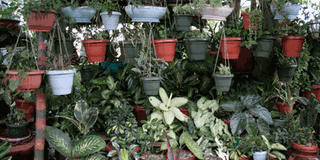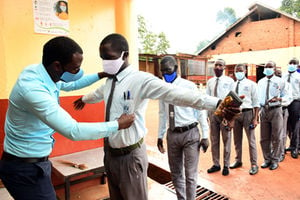Prime
The ABCs of caring for seedlings

Seed storage is important. Keep your seedlings in a cool dark places with little moisture. Photo by Abubaker Lubowa.
What you need to know:
Are you a green thumb? Sometimes growing your plants from scratch can be tedious but rewarding.
Why would anyone want to go through the hassle of growing their own seedlings when there are nurseries almost everywhere you turn along Kampala’s suburb roads?
The reasons vary. Charles Akanga, an Information Technologist and resident of Najjanankumbi says it was not out of choice. “I needed fruit tree seedlings to plant in the village. We have family land there, but it is mostly idle. I thought about the expense and decided to grow them myself. At the moment I have only jackfruit tree seedlings because we have a jackfruit tree in the compound.”
His brother transplanted some eucalyptus tree seedlings on the same land some years back and only a handful survived. There were about a hundred of them. “That’s why I opted to nurture my tree seedlings first, before taking them to the field.”
Starters should not venture into planting too many seed varieties at the same time. Akanga intends to go on and plant Avocado and date seedlings as well. ‘It can get complicated when you write your records. You need to know when you planted them, how long they took to grow and their success rate.
This can help a person make adjustments for subsequent plantings,’ he says. “Sometimes they don’t grow at all. But more than half of what I planted has grown. And I haven’t used any fertiliser. I had read about potted mixes, warming soil to sterilise it – the works. But all that is expensive and time-consuming.”
Seed storage is important because their quality can decline with poor storage. Keep them in cool, dark places with little moisture. Storing them in plastic bags and labelling them – name, year and source helps. Putting them in the fridge can also be one way of preserving them.
Plastic containers are preferable to clay pots for seedlings. The nurseries use tough black plastic sheeting. Wide shallow containers prevent over-crowding and water logging. Seedlings whose roots are fragile are best planted in individual packs. Old plastic containers, like pomade tubs with holes poked into the bottom can also work well.
Steps
Soak containers in 10 per cent bleach solution for fifteen minutes and let them dry. Seeds must be just below the surface of the soil, unless they are small. In that case, they need to lie on the surface. You can then use a sieve to sprinkle soil mix on top of the seeds.
Air flow and good drainage is important to prevent disease. “I water the seedlings early in the morning before the sun gets hot, so that they can dry well during the day. If they remain damp, they can develop a fungal infection or moths and slugs can feast on the leaves. Then I water them again late in the evening, to cool them off for the night,” Akanga says.
Cover your containers with plastic wrap to keep the moisture level constant. When the seeds germinate, remove the plastic wrap and turn the seedlings around daily. This keeps the stems strong.
When the seedlings germinate, the food they were using from the seed ceases to exist, so you need to fertilise them, to give them additional nutrition. But when the leaves emerge, use a weaker liquid fertiliser on a weekly basis. Mr. Akanga skipped the fertiliser.
Before transplanting, make sure the seedlings are hardened off getting them used to direct sunlight. Start by putting them out in the morning only on the first day. Keep increasing their time in the sun by allowing more hours each day until they are strong enough to be transplanted.




